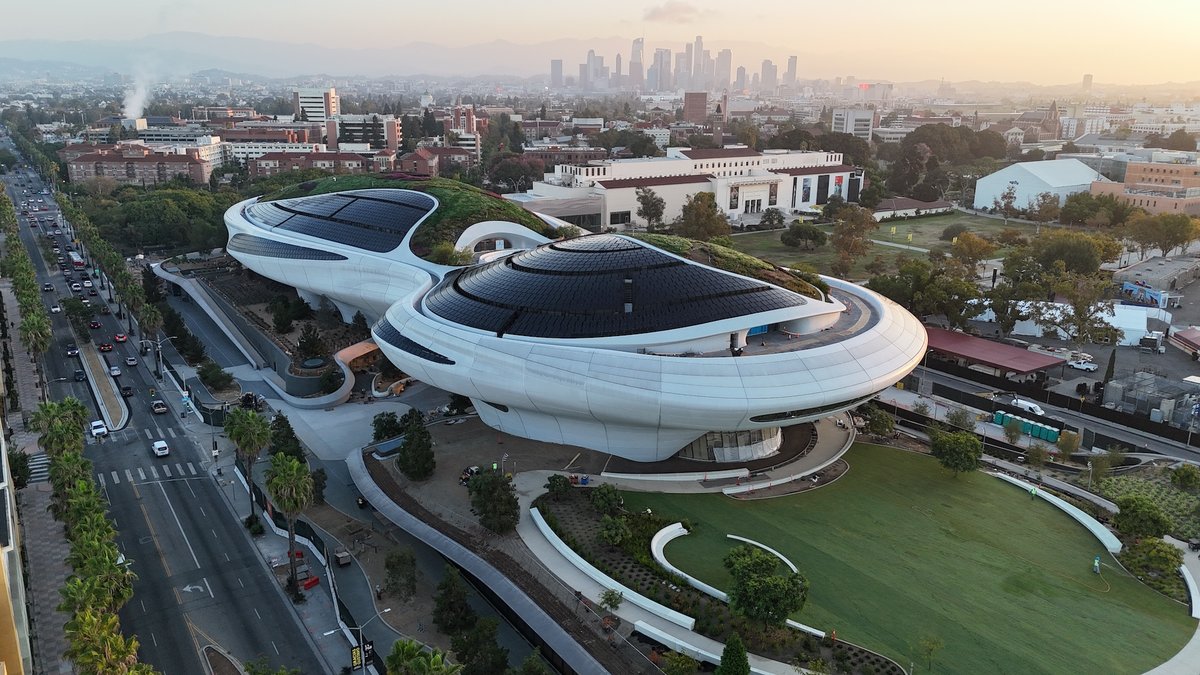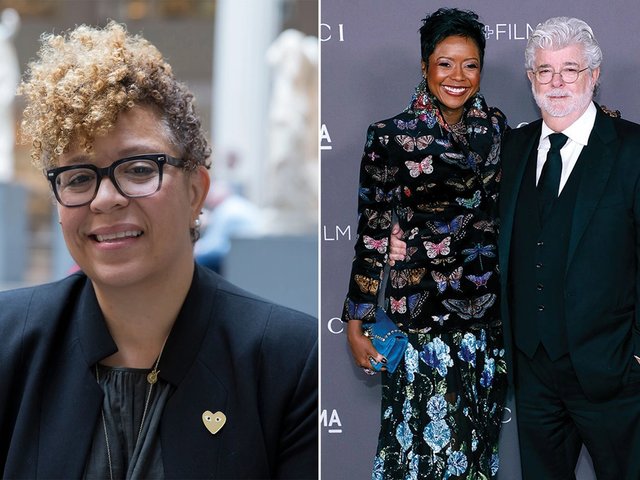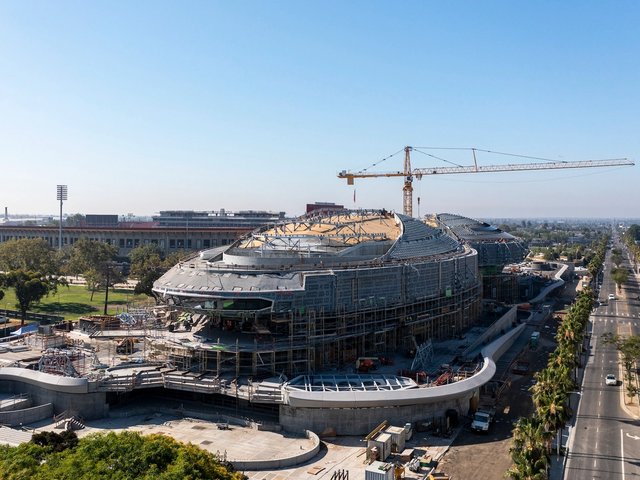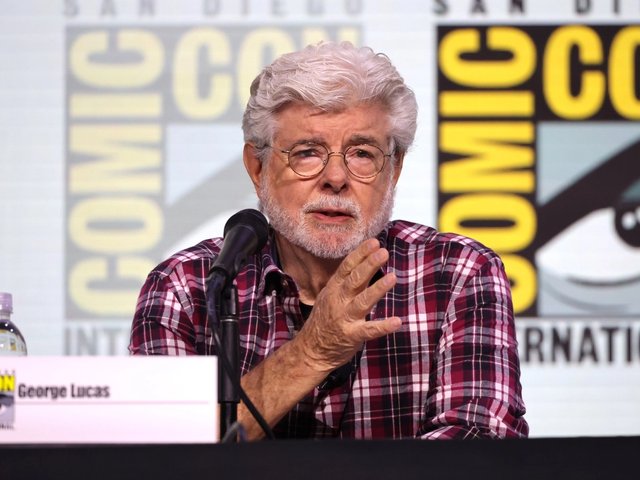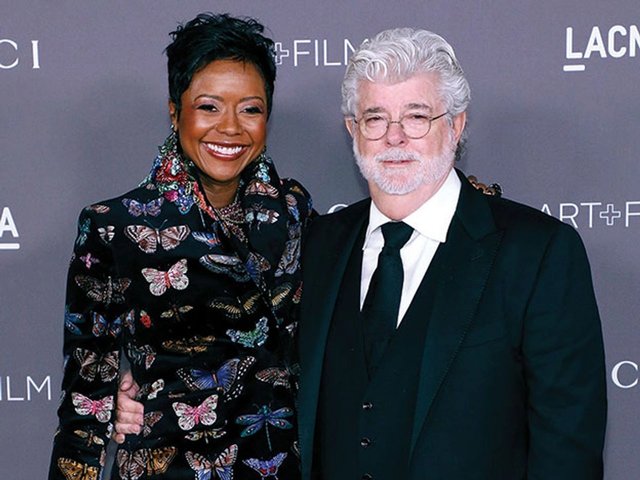True to its name, the Lucas Museum of Narrative Art in Los Angeles has had a long and twisting origin myth, but now, more than a decade after the project was first announced, its founders—the Star Wars film-maker George Lucas and his wife, Mellody Hobson, the president and co-chief executive of Ariel Investments—have set an opening date: 22 September 2026.
In the 13 years between the project’s announcement and grand opening, it will have changed cities twice—from San Francisco to Chicago to Los Angeles—grown in budget from around $700m to a reported $1bn, changed designs and leaders, added and shed staff, and amassed a rich and varied collection of more than 40,000 works. Now its campus in Los Angeles’s Exposition Park is in advanced stages of construction, with the exterior of its futuristic building by Ma Yansong of the architecture firm Mad nearly complete and plantings already growing in the surrounding gardens designed by Mia Lehrer of Studio-MLA.

Lucas Museum plaza construction in February 2025 © 2025 JAKS Productions. Photo courtesy of USC School of Cinematic Arts. Photo by Roberto Gomez. All rights reserved
The building, a cloud- or spaceship-like form rising from two bases, will house 100,000 sq. ft of exhibition space across 35 galleries. They will feature thematic groupings around topics including love, work, adventure and sports. The collection spans an enormous range of materials—from ancient artefacts and canonic art-historical figures like Frida Kahlo, John Singer Sargent, Robert Colescott and Thomas Hart Benton, to equally important figures from the worlds of comic books and graphic novels, like Jack Kirby, Alex Raymond, Rafael Navarro, R. Crumb, Alison Bechdel and Chris Ware.
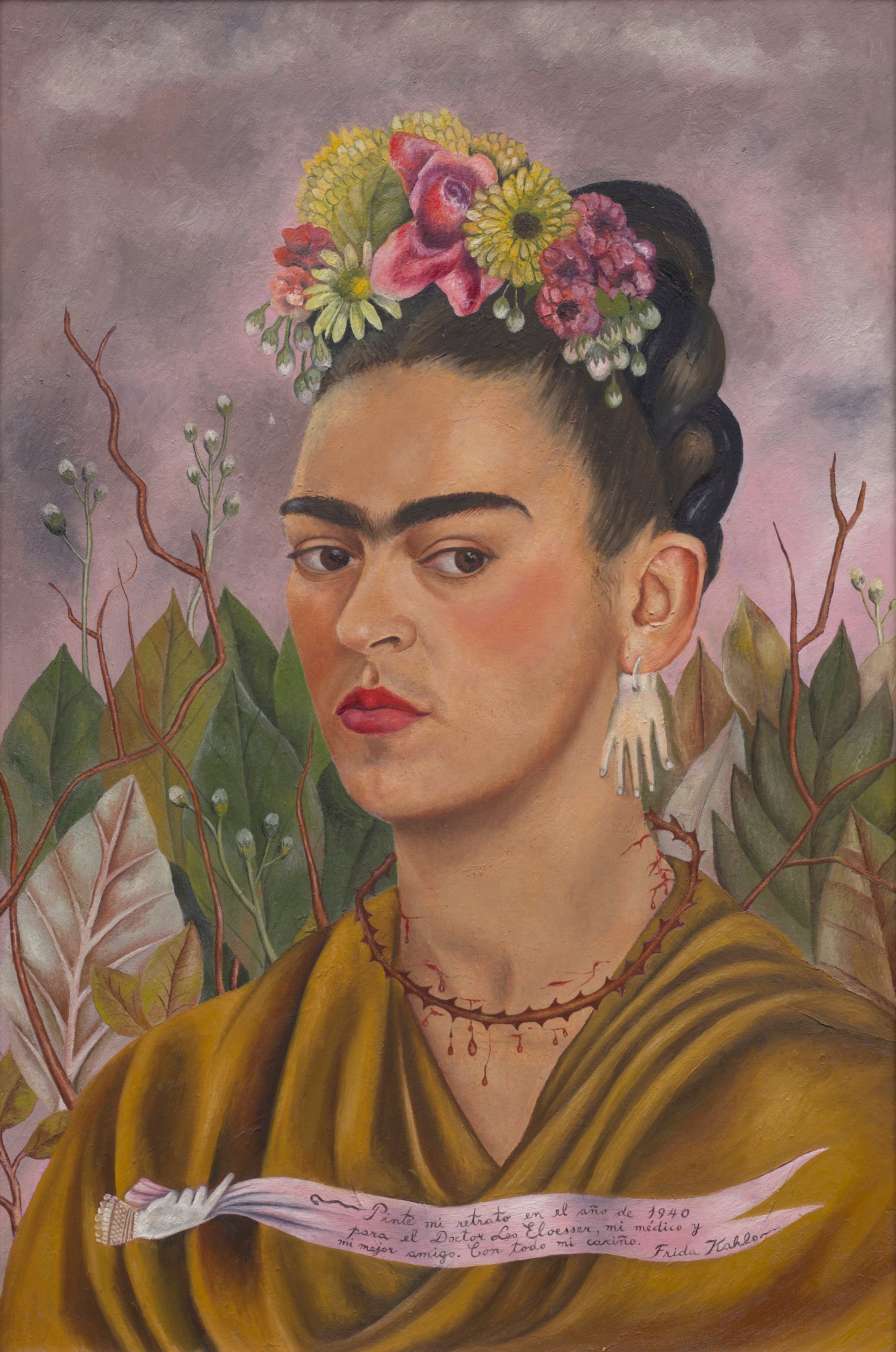
Frida Kahlo, Autorretrato dedicado al Dr. Eloesser (Self-portrait dedicated to Dr Eloesser), 1940 Lucas Museum of Narrative Art, Los Angeles. © 2025 Banco de México Diego Rivera Frida Kahlo Museums Trust, Mexico, CDMX / Artists Rights Society (ARS), New York
The collection is also rich in photography—by Gordon Parks, Dorothea Lange, Henri Cartier-Bresson and others—and includes the Separate Cinema Archive, a collection of materials documenting the history of African American film. It further features more popular art that connected with wide audiences through mass media, including works by Beatrix Potter, Norman Rockwell, Ernie Barnes, Alphonse Mucha and Frank Frazetta.

Ernie Barnes, The Critic’s Corner, 2007 Lucas Museum of Narrative Art, Los Angeles. Ernie Barnes Family Trust
“This is a museum of the people’s art—the images are illustrations of beliefs we live with every day. For that reason, this art belongs to everyone,” Hobson said in a statement. “Our hope is that as people move through the galleries, they will see themselves, and their humanity, reflected back.”
Lucas will see his own career reflected back in the galleries as well, as the institution will house the Lucas Archives—including costumes, props, models and art related to his films.

Artist unknown, Polychrome Relief Depicting the Afterlife of an Elite Official,
around 2200BC-2000BC (Egypt, First Intermediate Period) Lucas Museum of Narrative Art, Los Angeles
Since the departure of the museum’s director and chief executive Sandra Jackson-Dumont last February, Lucas has been “responsible for content direction”. In May, the museum laid off 14% of its full-time staff and cut seven part-time roles.
The museum’s curatorial leadership includes Pilar Tompkins Rivas (chief curator and deputy director for curatorial and collections), Ryan Linkof (senior curator) and Laela French (curator and head of the Lucas Archives). On its board of directors are the fellow film-makers Guillermo del Toro and Steven Spielberg, Arne Duncan (former US secretary of education under Barack Obama) as well as the president emeritus of the Field Museum of Natural History in Chicago and Michael Govan, the chief executive and director of the Los Angeles County Museum of Art—whose own enormous building project is scheduled to open next spring.


